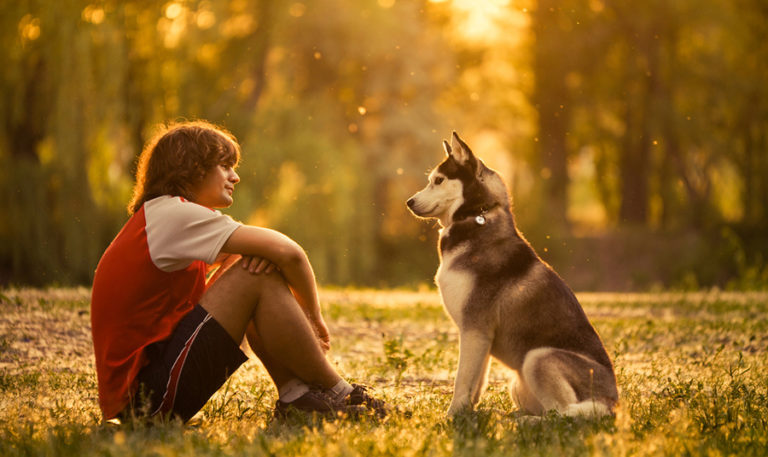
Siberian Husky Maya. Image by Irene Mei/ Flickr (CC BY-NC-SA 2.0)..
The Hidden Dog in Us All
“Animals were not incidental to our evolution into Homo sapiens — They were essential to it. They are what made us human.”
—Pat Shipman
Dogs were the first non-human members of the human group. They are our original companions. The first animals we domesticated, they share a 40,000 year history with humans. To them humanity owes its very survival and evolution through enhanced meat acquisition dogs made possible via hunting, as a consequence of which humans grew physically and intellectually.
It was co-evolution of both species which shows up in the parent-child relationship between dog and human, as psychological research has recently uncovered. Only after the agrarian revolution when the importance of the dog to food acquisition declined did we see a loss of status of the dog.
The original humans, the hunter-gatherers, loved the dog as family and an equal member of the group because they knew that without the dog they were nothing in terms of group survival, and of intellectual and physical development. The dog shows up as sacred to them.
The dog in terms of the human is the closest anyone can get to understanding nature in a synthetic world. Dogs are the link between humanity and nature and may teach us how to reclaim our relationship with nature. Given their history of companionship, dogs are the clearest pathway to understanding God through nature. The dog is a gift to humanity.

The concept of mind and intelligence is about putting yourself as an object in the social situation to take on the role of the other. It was first elaborated upon by G. Herbert Mead. Mind, understood as such, is about being human — and dogs are closer to humans in mindfulness than any other animal. This is why they are a unique interface between people and nature. To a lesser extent, babies do the same thing but very soon they discard nature to adopt the synthetic based on language. This mindfulness of the dog is historical and evolutionary based on their association with humans. They think and act more like humans than any other animal.
Much of what we know as “human” in terms of mind and matter comes from the long history of prehistorical interaction between people and dogs, the biological stamp of which is found in both species. This is just one of the many reasons why the quality of interaction between dogs and humans is unique; it cannot be paralleled by any other animal and led to the evolution of a human-like mind and consciousness in the dog.
Evolution (by natural selection) says nothing about origin of life or creation. It assumes an existent living organism that undergoes changes based on chance mutations, of which the beneficial ones are preserved through reproductive advantage. In terms of the “co” or concomitant evolution between dogs and humans, beneficial mutations would be based on interaction and survival advantage linked to that. Interaction is not one-sided. This means there is just as much dog in the human as there is human in the dog.

Co-evolution of dog and human genomes implies concomitant development of both species based on a long history of interaction. In tune with human nature, the genetic makeup of the species, self-realization, happiness, and self-fulfillment imply translation of the genetic behavioral potential into actuality.
Synthetic culture and values operate in a similar fashion, a lack of actuality signifies alienation. This means that in order to self-realize, a necessary prerequisite is interaction based on mutual dependency (love) with the dog as historically charted, without which it becomes improbable that the human can self-realize to the fullest extent of his or her genetic potential. For the dog it is the same.
The unique quality dogs add to human life, without which humans cannot self-actualize.

